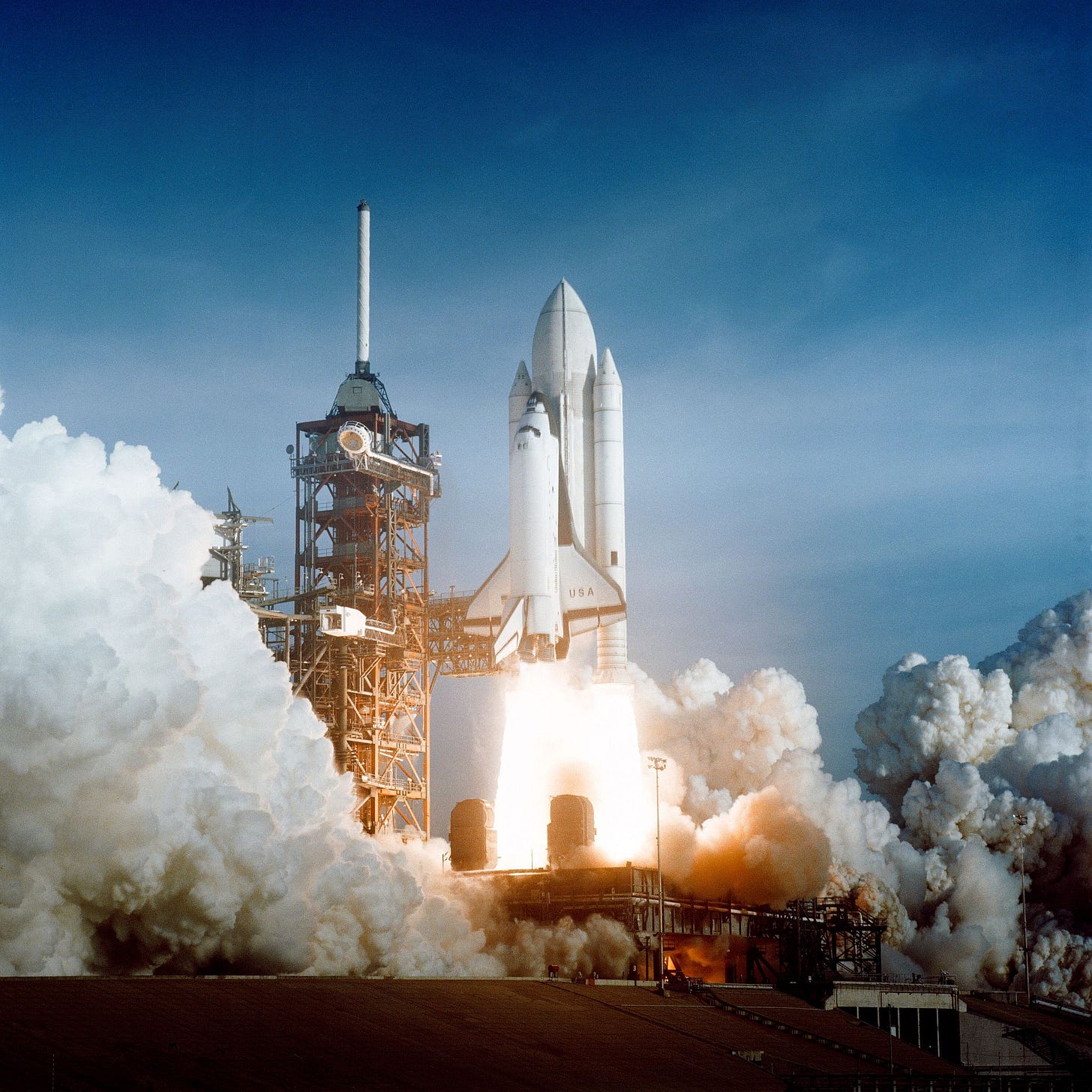The Mysteries of History (February 1 Edition)
Jim Thorpe, Greensboro Sit-In, Columbia Space Shuttle
“Those who cannot remember the past are condemned to repeat it.” — Spanish-American philosopher George Santayana, 1905
1913 — Best All-Around Athlete of the 20th Century Signs Baseball Contract
public domain image from wikimedia commons
Jim Thorpe (1887-1953) was arguably the best all-around athlete of the 1900s. He excelled in track, football, basketball, and baseball, and was an Olympic medal winner — until his medals were stripped from him once it was discovered by busybodys that he had played minor league baseball years earlier.
On this day in 1913, the day after relinquishing his Olympic medals, the New York Giants (Baseball team) signed Thorpe to a major league contract. He also played professional football and basketball.
As a side note, Kevin Joseph Aloysius “Chuck” Connors (1921-1992) was also a versatile athlete, being one of only thirteen to play both professional baseball (Brooklyn Dodgers and Chicago Cubs) and basketball (Boston Celtics) before turning to acting as his “main hold.”Jim Thorpe was born in Indian Territory (which became the State of Oklahoma in 1907, when he was 20); he was a member of the Sac and Fox nation. His Native American name was Wa-Tho-Huk.
Questions: Which famous Native American leader was Jim Thorpe related to? What school in Pennsylvania did Thorpe attend, and who was the football coach there? For which professional teams did Thorpe play basketball and football? Who portrayed Jim Thorpe in the 1951 film "Jim Thorpe — All-American"? Do you think it was fair that Thorpe was stripped of his Olympic medals? Were his medals ever returned, and if so, how long after his death? What's the story behind Jim Thorpe, Pennsylvania?1960 — Greensboro Sit-In Begins
public domain image from wikimedia commons
On this date in 1960, four young black men took a stand for their own Civil Rights and that of countless others when they peacefully refused to leave a “Whites Only” lunch counter after being denied service there due to their race or the color of their skin. These four men, all college students, were soon joined by others, who enacted a sit-in at the counter, staying seated there until the store closed. They kept this up in the days that followed; by the end of the week, the “Greensboro Four” had become 200. The peaceful protesters prolonged the sit-in until the lunch counter was finally integrated six months later. The tactic they used spread to other cities, too.
The building where the successful sit-in took place has changed from a Woolworth’s department store to the International Civil Rights Center & Museum. The four became hundreds, and the store became a monument.
Questions: What were the names of the first four students to peacefully protest, and what became of them in later life? Were they subjected to any offensive or violent behavior during their sit-in? In what ways did they need to exercise self-control? Do you agree with this form of protest, which was foreshadowed by what Mark Twain wrote in his piece entitled "Traveling with a Reformer"?2003 — Columbia Space Shuttle
public domain image from wikimedia commons
On its way back down into earth’s atmosphere, the Space Shuttle Columbia broke up over Texas on this date in 2003. All seven passengers perished.
On liftoff, a little over two weeks earlier, a piece of the craft had broken off and struck the edge of the Shuttle’s left wing. Although possibly causing only minor damage, some aerospace engineers feared there might be catastrophic repercussions. But management decided that, even if this were the case, there wasn’t much that could be done about it — they felt that it was too late to remedy or rectify the damage caused, the exact nature and thus the severity of which was difficult to pinpoint.
The Columbia was almost 44 miles above the coast of California, traveling at around 17,000 miles per hour (23 times the speed of sound) when the damaged wing disintegrated. The last time the crew was heard from was one minute later. People on the ground in Texas heard a loud boom and saw streaks of smoke high up in the air. Over time, debris from the craft and remains of the crew were found scattered across 2,000 locations in Texas, Arkansas and Louisiana.
Even more tragically, it was later determined that the Columbia crew could have repaired the damage to the wing, or they could have been rescued by a subsequent shuttle mission, the Atlantis (had the Columbia delayed their return and Atlantis fast-forwarded theirs).
The only living survivors aboard the Columbia were some worms stored in a canister who had been part of a scientific experiment the astronauts were conducting.
Questions: Who were the Columbia crew members? What were the ramifications to those who decided to risk the lives of the crew — were they found legally responsible? Did they retain their jobs? Was the crew aware of the damage to the shuttle? If so, did they state any opinion on what they think should have been done? What was the last thing they communicated?








